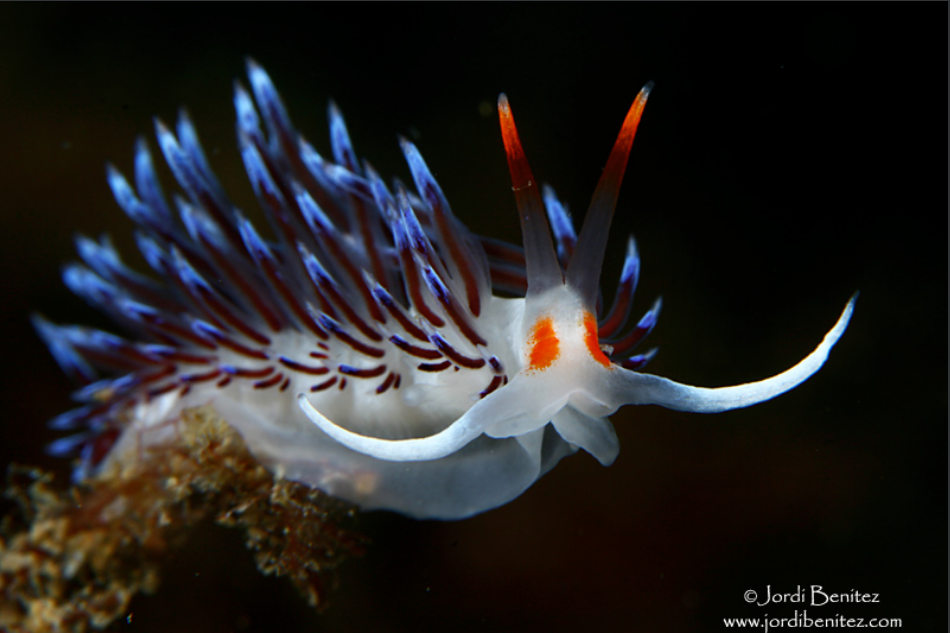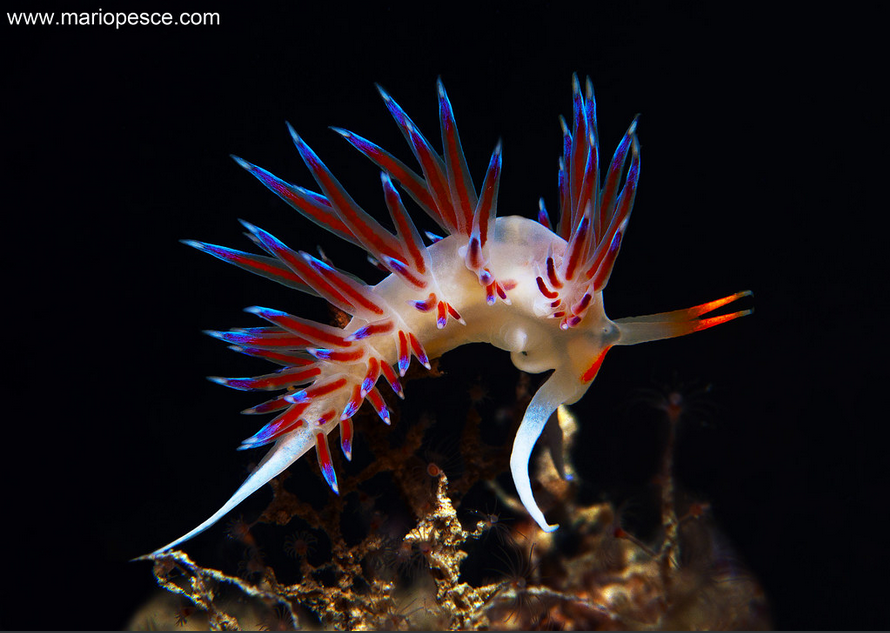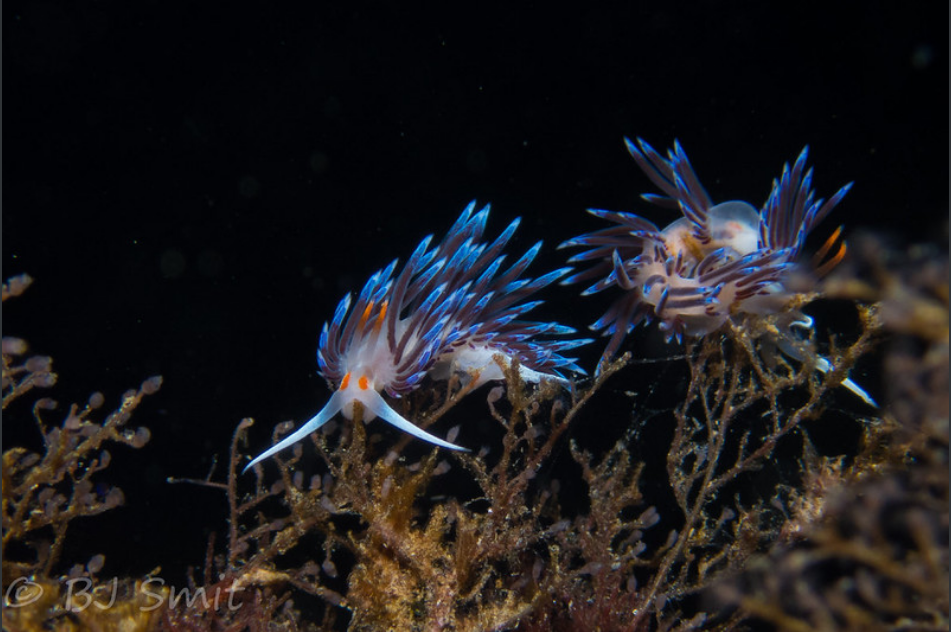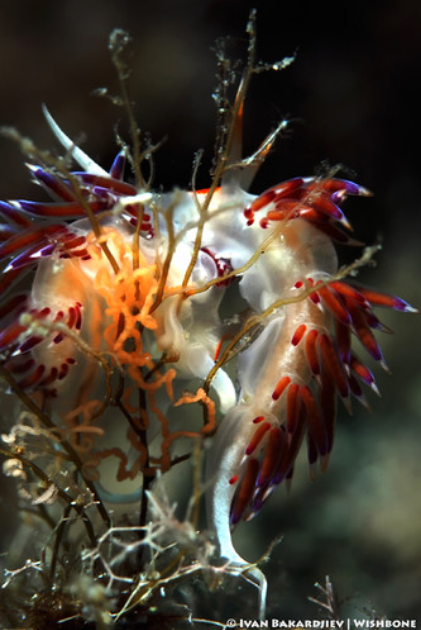Main photo by David Borg
The pilgrim hervia is an aeolid sea slug, its average size is between 3 and 5 cm. The body is thin and slender, with a long sharply pointed tail

Above, photo by Antonio Martin
The orange horns are called rhinophores, and act as their nose—nudibranchs in general have poor eyesight, and instead use their rhinophores to “smell” their food. Their rhinophores are smooth, begin in white, changing to orange with white tips. The tusks are called oral tentacles, and are used to shovel food into their mouths. The tentacles are white, smooth, and usually a fair bit longer than the rhinophores. The mouth opening sits between and slightly below these tenacles.
The orange patch between marks where the eyes are, but I’m yet to read that the colour has anything to do with its vision. source

Above, photo by jordi benitez
Its body coloration is milky white with 8 to 10 clusters of dorsal cerata which can be bright red, purple, brown or blue, with the tips coloured in luminescent blue. [Cerata- are dorsal and lateral horn-like growths on it’s upper body]
Those cerata act like gills, and each one contains a terminal outgrowth of the digestive gland, a diverticulum. (An outgrowth of the digestive gland or hepatopancreas of the animal)

Above, photo by Mario Pesce
This species occurs in the Mediterranean Sea and in the eastern Atlantic Ocean from the Channel south to Senegal. This sea slug prefers to live on rocky bottoms and slopes in clear and well-oxygenated water, between 5 and 50m in depth
The pilgrim hervia feeds on hydroids (small predators related to jellyfish)…
These look a bit like spindly underwater branches source

Above, photo by Bart
In recent years, C. peregrina has been the subject of study in “kleptopredation”. This is eating food not for just its own nutrients, but for the nutrients of what the food itself consumes! In short, it was found that C. peregrina prefer consuming hydroids that have recently fed themselves (hydroids are predators too) source

Above, Cratena peregrina nudis laying eggs, Greek Aegean. Photo by Ivan Bakardjiev
Info from wikipedia, unless stated otherwise
